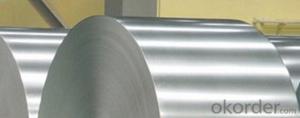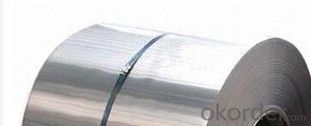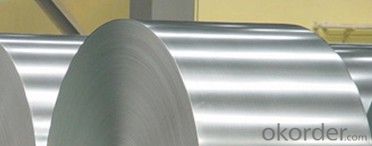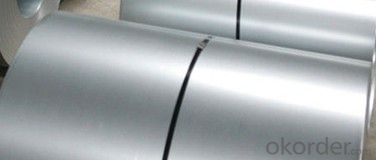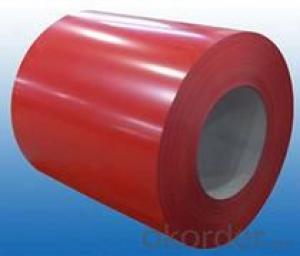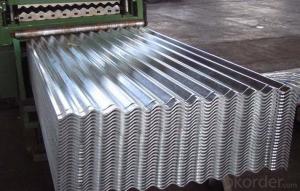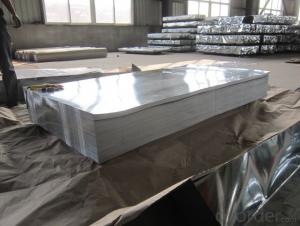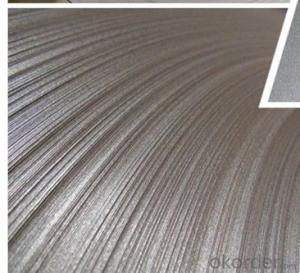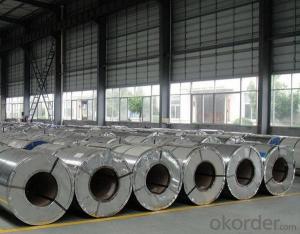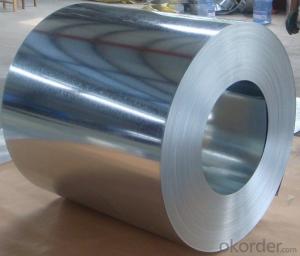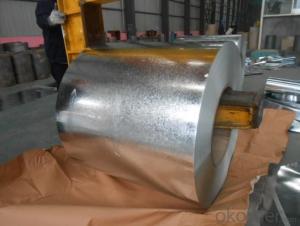GALVANIZED STEEL COIL-SHEET WITH BEST SELLING
- Loading Port:
- Tianjin
- Payment Terms:
- TT OR LC
- Min Order Qty:
- 25 m.t.
- Supply Capability:
- 20000 m.t./month
OKorder Service Pledge
OKorder Financial Service
You Might Also Like
Hot Dipped Galvanized Steel Coils -Sheet with best selling
Product Description
1.What we can supply
Size | (0.13mm-5.0mm )*(600mm-1500mm)*coil |
Steel Grade | JIS G3302 SGCC~SGC570,SGCH(FULL HARD-G550),SGHC~SGH540 EN 10346-DX51D+Z,DX53D+Z, S250GD~S550GD ASTM A653M CS-B, SS255~SS550 |
Coil Weight | 3MT-14MT |
Coil ID | 508mm/610mm |
Chemical Treatment | Chromated(Cr 3+,6+,0+) |
Surface | Skin pass/non skin pass |
Oil | Slight Oiled/Dry |
Spangle | Regular/Zero/Big |
Zinc Coating | Z40-Z300 |
Capacity | 1,500,000MT/year |
Mill Origin | HBIS-Tangsteel,Shandong Zhongguan, Changshu Everbright, WISCO |
2.Chemical compositon:
STEEL GRADE | CHEMICAL COMPOSITION % | MECHANIC PROPERTY | C.B OF COATING | COATING | ||||||||||
C | Si | Mn | S | P | T.S | Y.S | E.L | |||||||
x103 | x103 | x102 | x103 | x103 | Mpa | Mpa | % | d=0 180° | G/M² | |||||
JIS G3302 SGCC | 12 | 30 | 41 | 31 | 21 | 480 | 300 | 13 | OK | Z60-150 | ||||
JIS G3302 SGCH | 12 | 10 | 21 | 18 | 8 | 680 | 650 | OK | Z60-150 | |||||
ASTM A653 CS.B | 20 | 30 | 60 | 35 | 30 | 386 | 205~380 | 20 | OK | Z80-275 | ||||
DX51D+Z | 29 | 21 | 18 | 1.8 | 11 | 355 | 245 | 38 | OK | Z80-275 | ||||
Packaging & Shipping
1.Packing
plastic film +water proof paper + steel plate+ packing steel strip
2.Shipping
cnbm has her own logistic company who will provide professional service in vessel booking, insurance covering, loading, storaging, documentation. Creating the complete service chain for trading and logistic
1.Sample
Sample free and postage paid.
2.SGS inspection
SGS inspection for free, if quantity is over 500MT/order.
3.Steel Processing
cnbm provide additional service in steel bending, pounching, lasher cutting, welding, forming, designation, installation
- Q: Do the steel sheets have any sharp edges?
- Yes, steel sheets can have sharp edges. During the manufacturing process, steel sheets are often cut or sheared, which can leave sharp edges. It is important to handle steel sheets with caution and use appropriate protective equipment, such as gloves, when working with them to avoid any injuries from the sharp edges.
- Q: Are the steel sheets suitable for architectural cladding?
- Yes, steel sheets are suitable for architectural cladding. Steel is a strong and durable material that provides excellent protection against weather elements and other external factors. It can be easily shaped and fabricated into various designs, making it highly versatile for architectural applications. Steel cladding also offers a modern and sleek aesthetic, allowing for flexibility in creating visually appealing building façades. Additionally, steel sheets can be coated or painted to enhance their corrosion resistance and further customize their appearance. Overall, steel sheets are a popular choice for architectural cladding due to their strength, durability, versatility, and aesthetic appeal.
- Q: What are the different types of steel sheet finishes for industrial applications?
- There are several different types of steel sheet finishes commonly used in industrial applications. These finishes are applied to steel sheets to enhance their appearance, protect against corrosion, improve paint adhesion, and provide other functional benefits. Some of the most common types of steel sheet finishes include: 1. Hot Rolled: This finish is achieved by passing the steel through a high-temperature furnace, followed by rapid cooling. It results in a rough, scaled surface that is suitable for applications where appearance is not a primary concern. 2. Cold Rolled: In this finish, the steel is processed at room temperature, resulting in a smooth and clean surface. Cold-rolled steel sheets are often used in applications where a high-quality surface finish is required. 3. Galvanized: Galvanizing involves coating the steel sheet with a layer of zinc to protect against corrosion. This finish is widely used in industries such as construction, automotive, and manufacturing, where durability and resistance to rust are crucial. 4. Electro-galvanized: Similar to galvanizing, electro-galvanizing also involves coating the steel with zinc. However, in this process, an electric current is used to deposit the zinc onto the steel surface, resulting in a thinner and more controlled coating. 5. Stainless Steel: Stainless steel sheets are known for their high resistance to corrosion, making them ideal for applications in harsh environments. They can be finished with a variety of surface textures, including brushed, mirror, and patterned finishes. 6. Pickled and Oiled: This finish involves removing any oxide scale from the steel surface using an acid solution, followed by applying an oil coating to prevent rust formation. Pickled and oiled steel sheets are commonly used in automotive and construction industries. 7. Painted: Steel sheets can also be finished with a layer of paint, which not only enhances their appearance but also provides additional protection against corrosion. The type of paint used can vary depending on the application and desired finish. It's important to note that these are just a few examples of steel sheet finishes used in industrial applications. Different finishes are chosen based on the specific requirements of the application, such as aesthetics, corrosion resistance, durability, and cost-effectiveness.
- Q: Can steel sheets be used for roofing purposes?
- Yes, steel sheets can be used for roofing purposes. Steel roofing sheets are commonly used in commercial and industrial buildings, as well as residential homes. They are known for their durability, longevity, and resistance to harsh weather conditions such as rain, snow, and wind. Steel sheets are available in various profiles and finishes, allowing for customization to suit different architectural styles and design preferences. Additionally, steel roofing is lightweight, fire-resistant, and often made from recycled materials, making it an environmentally friendly roofing option. Overall, steel sheets are a popular choice for roofing due to their strength, versatility, and aesthetic appeal.
- Q: What is the difference between a hot rolled and hot dipped galvanized steel sheet?
- Producing a hot rolled steel sheet involves rolling the steel at high temperatures, typically exceeding 1,000 degrees Fahrenheit. This technique allows for easy shaping and forming, resulting in a sheet with a less precise and rougher surface finish. These sheets find frequent use in construction and structural projects where strength and durability are essential. Conversely, a hot dipped galvanized steel sheet undergoes an additional process following hot rolling. The sheet is immersed in molten zinc, creating a protective coating on its surface. This coating offers exceptional corrosion resistance and helps prevent rust, making hot dipped galvanized steel sheets particularly suitable for outdoor and exposed applications. The key difference between the two types lies in their surface finish and protective properties. Hot rolled steel sheets possess a rougher surface, while hot dipped galvanized steel sheets exhibit a smoother and more uniform appearance due to the zinc coating. Moreover, the galvanization process enhances the steel's corrosion protection, extending its lifespan and making it well-suited for harsh environments. To summarize, hot rolled steel sheets are versatile and widely used in various applications, whereas hot dipped galvanized steel sheets provide an extra layer of defense against corrosion and are often preferred for outdoor or exposed applications.
- Q: Do steel sheets have any magnetic properties?
- Yes, steel sheets do have magnetic properties. Steel is an alloy composed primarily of iron, carbon, and other elements, and it is known to be ferromagnetic. This means that it can be magnetized and attracts magnets. However, the degree of magnetism in steel can vary depending on its composition and processing. Some steel alloys can be easily magnetized and retain their magnetism even after the applied magnetic field is removed, while others may have lower magnetic properties. The presence of impurities and the specific heat treatment process can also affect the magnetic properties of steel. Overall, steel sheets can exhibit magnetic properties, but the degree of magnetism may vary depending on the specific type and composition of the steel.
- Q: How are steel sheets joined together?
- Steel sheets can be joined together using various methods, including welding, bolting, riveting, and adhesive bonding, depending on the specific application and desired strength of the joint.
- Q: What is the average yield strength of steel sheets?
- The specific grade and thickness of steel being used can cause variations in the average yield strength of steel sheets. Typically, the average yield strength of steel sheets falls between 250 and 600 megapascals (MPa). It is worth noting that different steel grades, such as mild steel, high-strength low-alloy (HSLA) steel, or stainless steel, will have different average yield strengths. Furthermore, the yield strength of a steel sheet can be affected by its thickness, with thinner sheets generally having higher yield strengths. Therefore, it is crucial to refer to the manufacturer's specifications or industry guidelines to determine the specific average yield strength for a particular steel sheet.
- Q: What is the weight of steel sheets?
- The weight of steel sheets can vary depending on the thickness and dimensions of the sheet. Generally, steel sheets can range from a few pounds to several hundred pounds per square foot.
- Q: Are steel sheets suitable for manufacturing HVAC grilles?
- HVAC grilles can be manufactured using steel sheets, which are a suitable material choice. Steel is widely favored for its strength, durability, and versatility when it comes to HVAC grilles. It possesses the capability to withstand the elevated temperatures and air pressures commonly found in HVAC systems. Steel sheets can be effortlessly molded into different shapes and sizes to meet specific grille designs and requirements. Moreover, steel is resistant to corrosion, a crucial factor in ensuring the long-lasting performance of HVAC grilles in both indoor and outdoor settings. In summary, steel sheets offer the essential properties and characteristics necessary for producing top-notch HVAC grilles.
Send your message to us
GALVANIZED STEEL COIL-SHEET WITH BEST SELLING
- Loading Port:
- Tianjin
- Payment Terms:
- TT OR LC
- Min Order Qty:
- 25 m.t.
- Supply Capability:
- 20000 m.t./month
OKorder Service Pledge
OKorder Financial Service
Similar products
Hot products
Hot Searches
Related keywords

